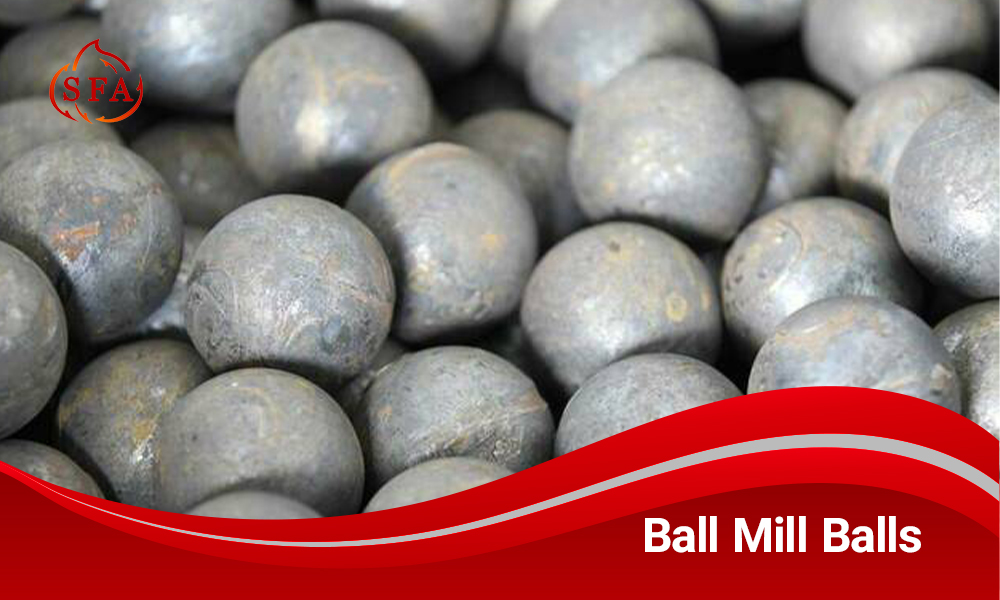

Ball Mill Balls: Everything You Need to Know in 2025!
In various industries, modifying the shape of raw materials is crucial for the next stages of production. Grinding balls are essential components used in industries to crush, grind, and process materials like minerals, cement, and ceramics. These Ball Mill Balls reduce material size, prepare it for further processing, and control crushing and abrasion. Different types of grinding balls vary in size, hardness, material, and quality, and each type is suited for specific materials. Understanding the characteristics and applications of these balls is key to choosing the right Ball Mill Balls for optimal results.
What are Ball Mill Balls and Their Role in the Grinding Process?
Ball Mill Balls are spherical components used in ball mills to crush and grind materials. They are typically made of cast iron, steel, special alloys, or ceramics to ensure the required hardness and resistance to wear. Grinding balls crush materials, homogenize them, prevent mill wall damage, and maintain efficiency. The goal is to reduce particle size into powder and ensure uniform grinding. A key benefit of grinding balls is their ability to apply controlled grinding energy, prolonging machine life by minimizing wall impact.
Click “Steel grinding balls and their importance in various industries” to read the article.
What are Grinding Balls Made Of?
When producing or purchasing grinding balls, material selection is crucial. Grinding balls must be durable, highly resistant to abrasion, and able to withstand wear. The right material directly impacts mill performance, lifespan, and efficiency. Common materials for steel balls for ball mills include hard steel, manganese cast iron, cast iron alloys, ceramics, and special alloys.
Factors such as the intended environment, workplace conditions, and budget influence the choice of material for grinding balls.
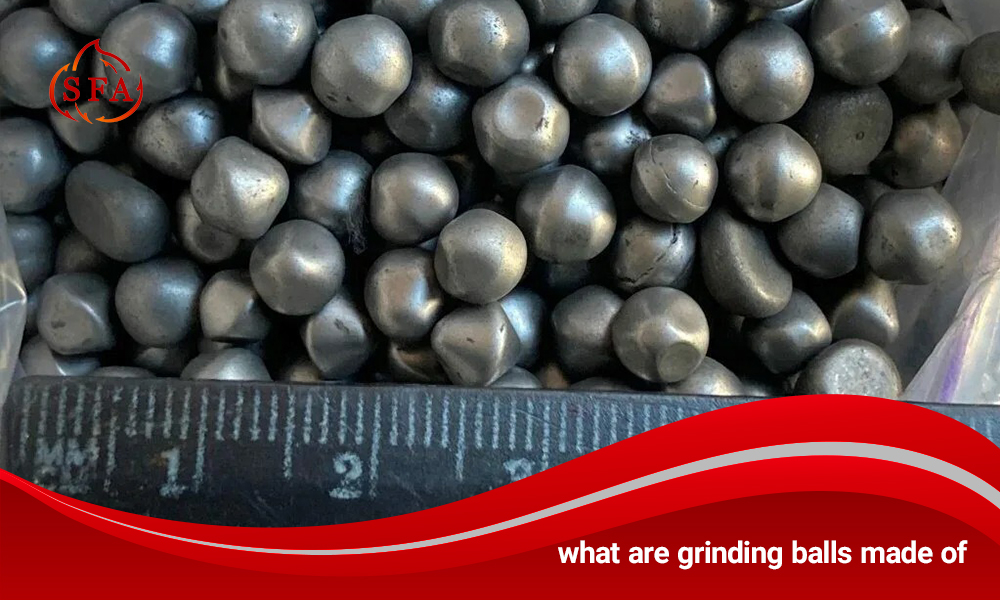

How Are Grinding Balls Produced?
Grinding balls are produced through precise steps to ensure the required hardness and durability. The production process may vary depending on raw materials and applications, but the general steps are as follows:
1. Selection of Raw Materials
The main raw materials for grinding balls include hardened steel, manganese cast iron, and special alloys. Choosing the right material is crucial for durability and performance.
2. Initial Shaping
After selecting materials, shaping begins. Steel balls are poured into spherical molds, while ceramic balls are made by mixing ceramic powder with additives and pressing under pressure.
3. Cooling and Hardening
Cooling allows the materials to slowly cool, reducing the risk of cracking. Hardness and abrasion resistance are increased through tempering and quenching processes.
4. Machining and Surface Finishing
After hardening, grinding balls undergo final machining to smooth and polish their surface, ensuring a uniform appearance.
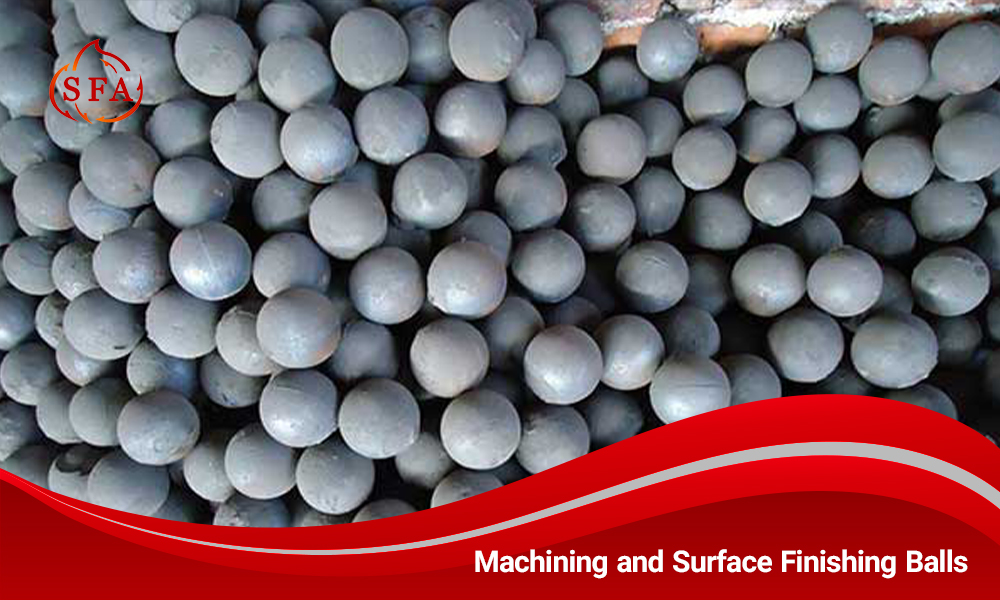

5. Final Quality Control
After production, grinding balls undergo quality control checks for dimensions, weight, hardness, and wear resistance. Only those meeting the required standards pass this stage.
Types of Grinding Balls and Their Applications
Grinding balls are categorized by material and structure, each with specific uses, features, and benefits:
1. Steel Balls
Steel balls, made from carbon or chrome steel, offer high resistance to damage. They are ideal for grinding hard minerals and cement. Advantages include durability, efficiency, and resistance to surface corrosion.
2. Alloy Balls
Alloy balls, made from chromium, manganese, and molybdenum, provide greater strength and durability. They are used in high-pressure, heavy-wear industries for impact and abrasion resistance.
3. Ceramic Balls
Ceramic balls, made from aluminum oxide and zirconium, are highly resistant to wear and chemical corrosion. They are used in sensitive industries like chemicals and pharmaceuticals, where contamination must be avoided.
Key Features in Choosing the Right Ball for the Mill
When choosing Ball Mill Balls, consider the following key factors to improve mill efficiency, reduce costs, and ensure high-quality products:
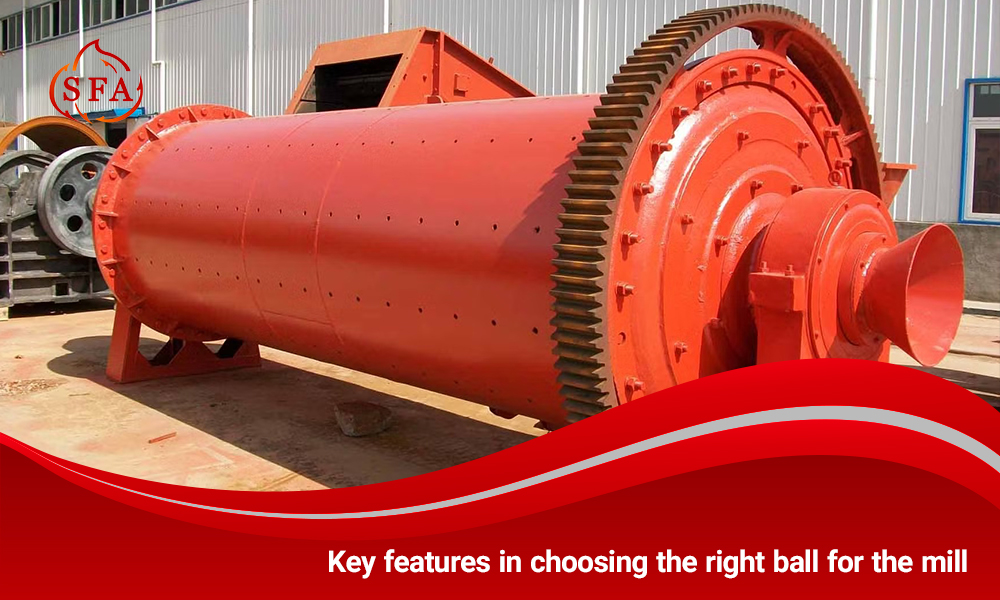

1. Hardness
High hardness balls resist wear and impact, making them ideal for grinding hard minerals.
2. Size & Distribution
Ball size should match the mill type and material. Experts often combine different ball sizes to enhance efficiency and reduce processing time.
3. Weight & Density
Heavier balls grind harder materials better. Lighter balls are used for softer materials.
4. Wear & Fracture Resistance
Long-lasting resistance to wear and impact extends equipment lifespan.
5. Chemical Resistance
For industries like pharmaceuticals, chemical resistance ensures safety and durability.
Advantages and Disadvantages of Different Types of Ball Mill Balls
Each type of grinding ball has its advantages and disadvantages. Understanding these helps industries choose the best option for their needs.
1. Steel Balls
Advantages: High resistance, long lifespan, efficient grinding, reduced processing time.
Disadvantages: Low chemical resistance, potential for metal contamination.
2. Alloy Steel Balls
Advantages: Superior resistance, long lifespan, suitable for heavy minerals.
Disadvantages: Higher cost and weight.
Click “Why High Chrome Grinding Balls Are Essential for Cement Mills” to read the article.
3. Ceramic Balls
Advantages: Excellent wear and chemical resistance, long lifespan.
Disadvantages: Fragility, higher cost.
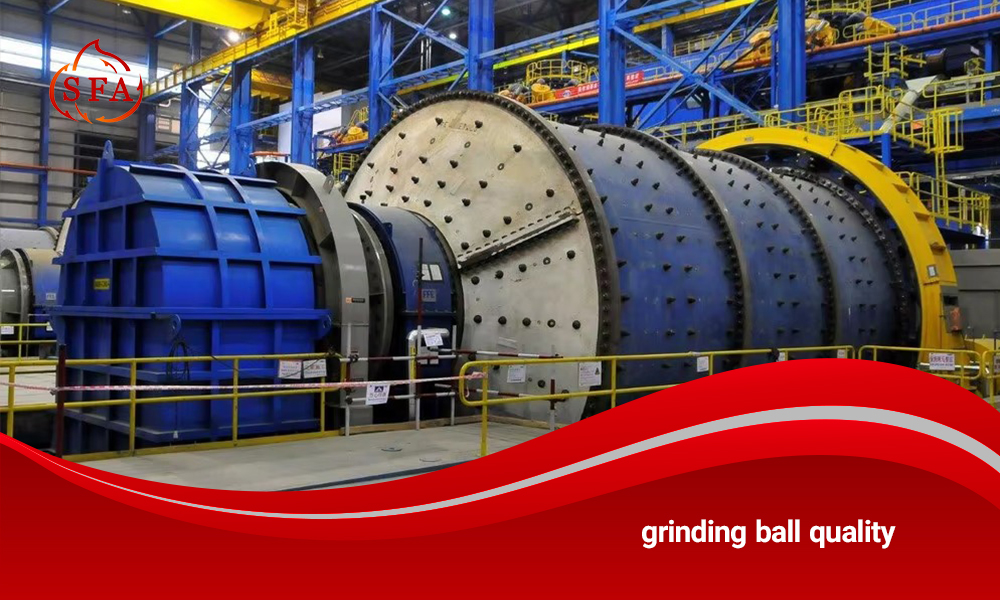

The Impact of Grinding Ball Quality on Productivity and Production Costs
The quality of ball mill balls directly affects productivity, energy efficiency, and production costs. Low-quality balls can decrease efficiency and increase costs. High-quality balls, however, improve productivity, reduce energy use, and extend equipment lifespan.
Guide to Buying and Maintaining Ball Mill Balls
Before purchasing or producing grinding balls, consult with experts to ensure you choose the right type. At Sepahan Foolad Atashgah, our team offers specialized advice on selecting and using grinding balls.


